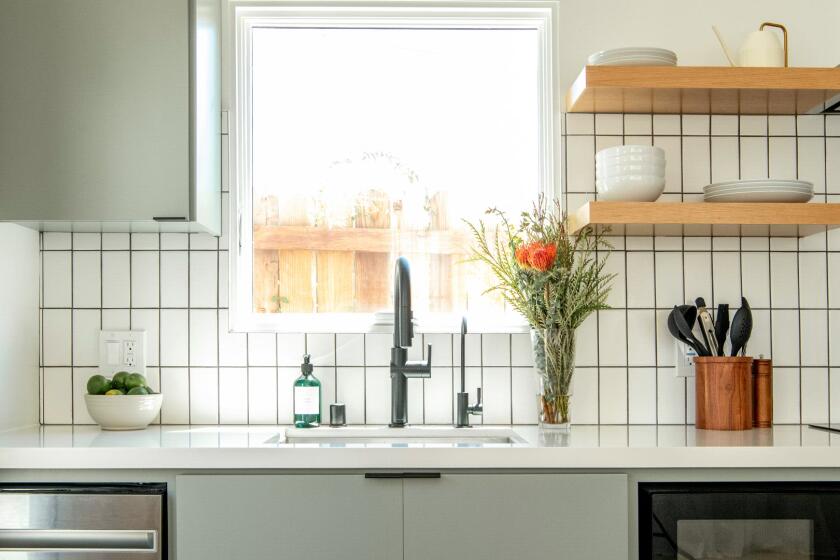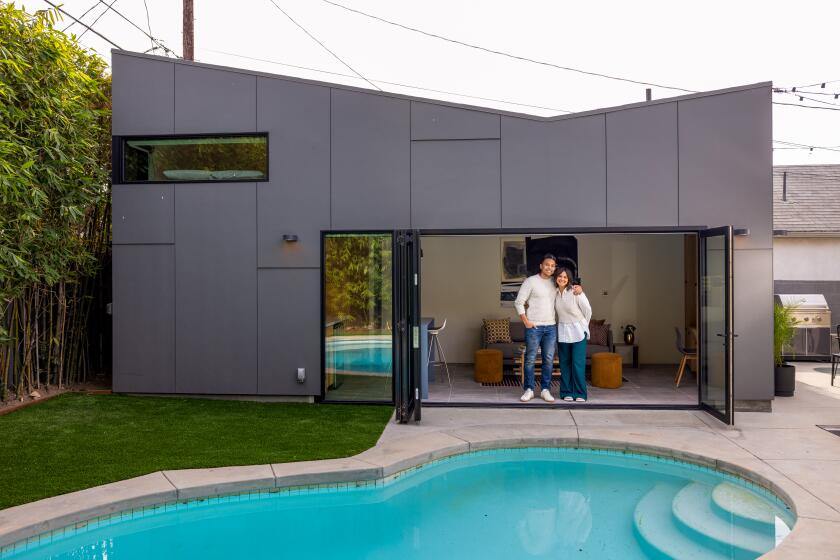
- Share via
- A former duplex will now be three rentals, complete with parking for each unit and shared laundry, thanks to an accessory dwelling unit, or ADU.
- On a large, triangle-shaped lot in Westwood, a garage is demolished and transformed into a two-story ADU with parking below.
Isabel Janken, her son Glen by her side, slowly ascends the stairs to her family’s newly built accessory dwelling unit, or ADU, in Westwood. Every step is a struggle, but Janken perseveres, her 96-year-old hands tightly gripping the railing. Her uncertainty without her walker is evident, but after several minutes, she reaches the top.
“You made it, Mom,” says Glen Janken, 71, with a smile as she completes the last step.
It’s taken more than two years of collaborating with architect Melissa Shin of Shin Shin Architecture, and Janken is finally seeing the ADU for the first time. The 715-square-foot, one-bedroom secondary dwelling located behind Janzen’s duplex is a testament to their shared perseverance in the face of delays driven by Los Angeles Department of Water and Power requirements, including low-impact development, or LID, stormwater runoff practices (three months), overhead power line clearance (five months) and a contractor who disappeared mid-project but eventually finished the job.
The hard work — and the payoff — is worthwhile. For Janken, it’s more than just a structure. It’s her former home.
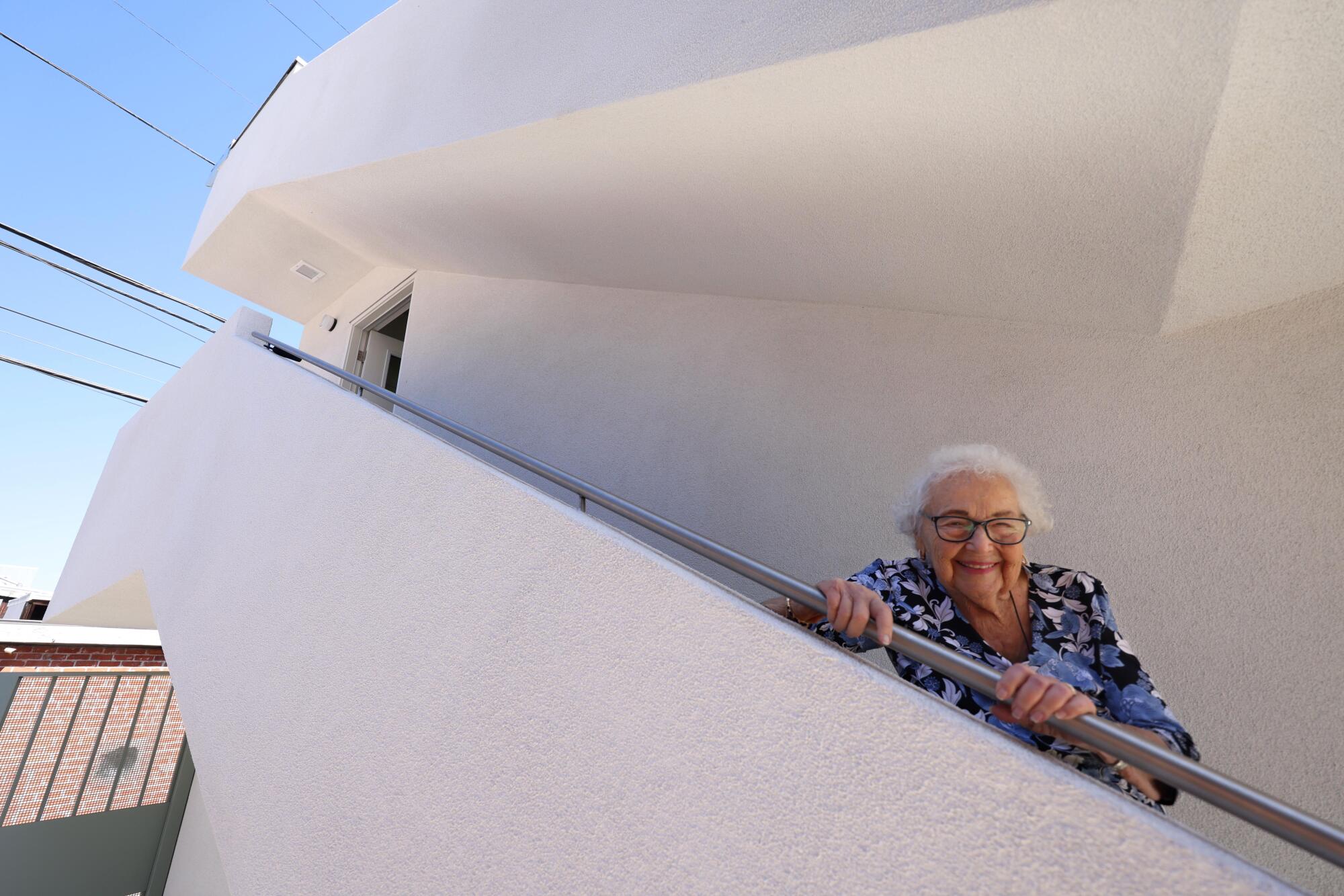
“It’s lovely, just lovely,” Janken says once inside the brightly lit one-bedroom rental with vaulted ceilings.
She enters the full-size kitchen, which is outfitted in colorful pink tile from Fireclay Tile, and proceeds to the living room, which includes a custom-built entertainment center, before looking left and right, trying to take it all in.
Before installing a kitchen in a tiny ADU, homeowners should assess its purpose, measure it carefully, research small-scale appliances and imagine it as a full-size kitchen.
“We talked about the kitchen a lot,” says Shin, who describes Janken as “forward-thinking about the future of L.A. housing.” ADUs are usually 600 to 1,200 square feet; given their small floor plan, most don’t have formal dining rooms. Shin designed a bar in between the kitchen and living room where tenants can eat. “Isabel wanted a full kitchen,” Shin says of the layout. “She wanted it to be family-oriented.”
With her son shadowing, Janken proceeds down the hallway, looking into the bathroom. Inspired by Le Corbusier’s famous Villa Savoye, Shin designed a blue-and-white tiled shower that echoes the bathroom of the 1928 Modernist home in Paris. “I told Isabel that she and the Savoye were born the same year,” Shin says laughing.
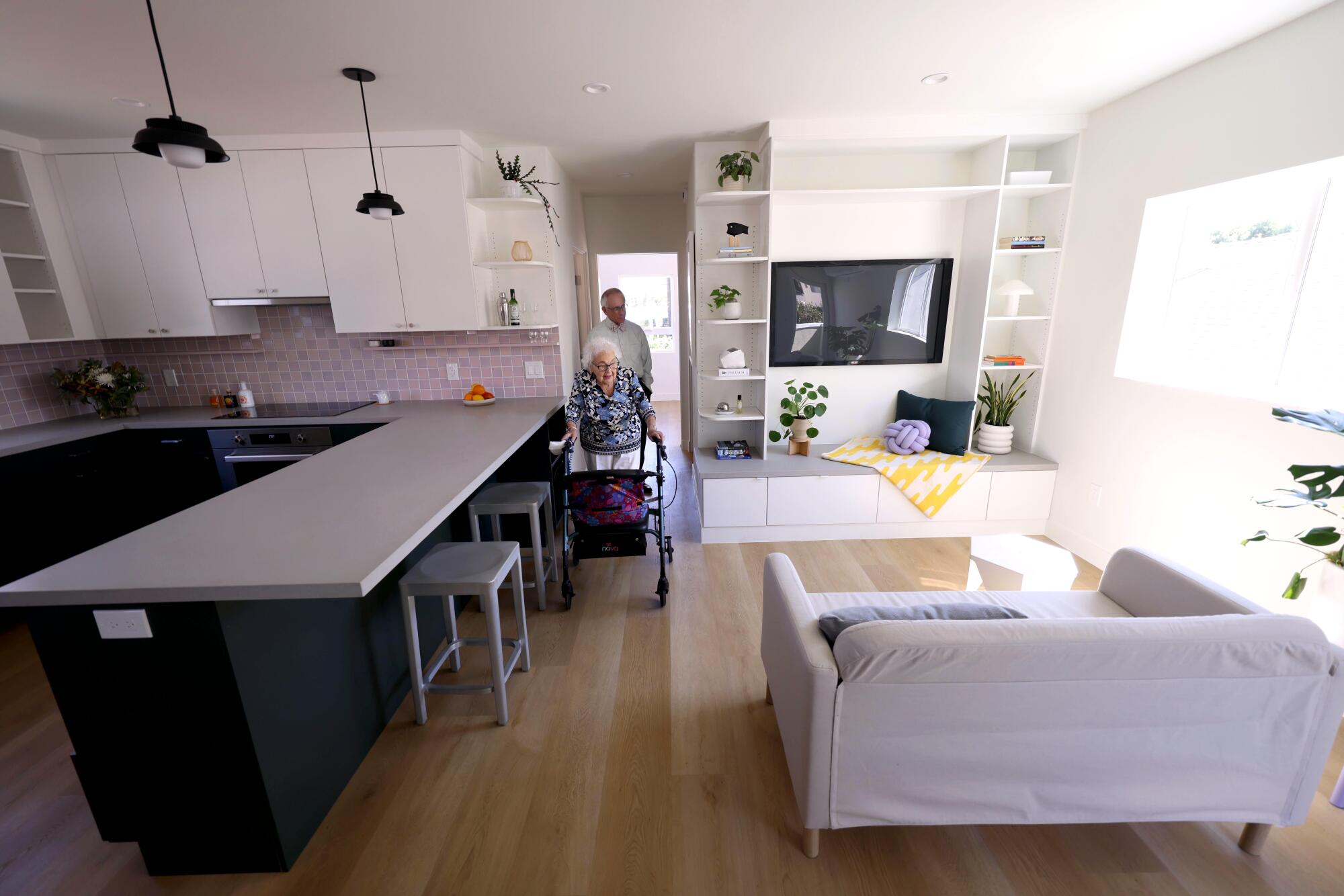
Small details like color help to differentiate the zones in the home without adding walls — pink in the kitchen, blue in the bathroom, white in the living room and bedroom and green with the rooftop deck. In a move that helps to maximize space further, Shin designed a custom entertainment center with integrated millwork that elevates the living experience.
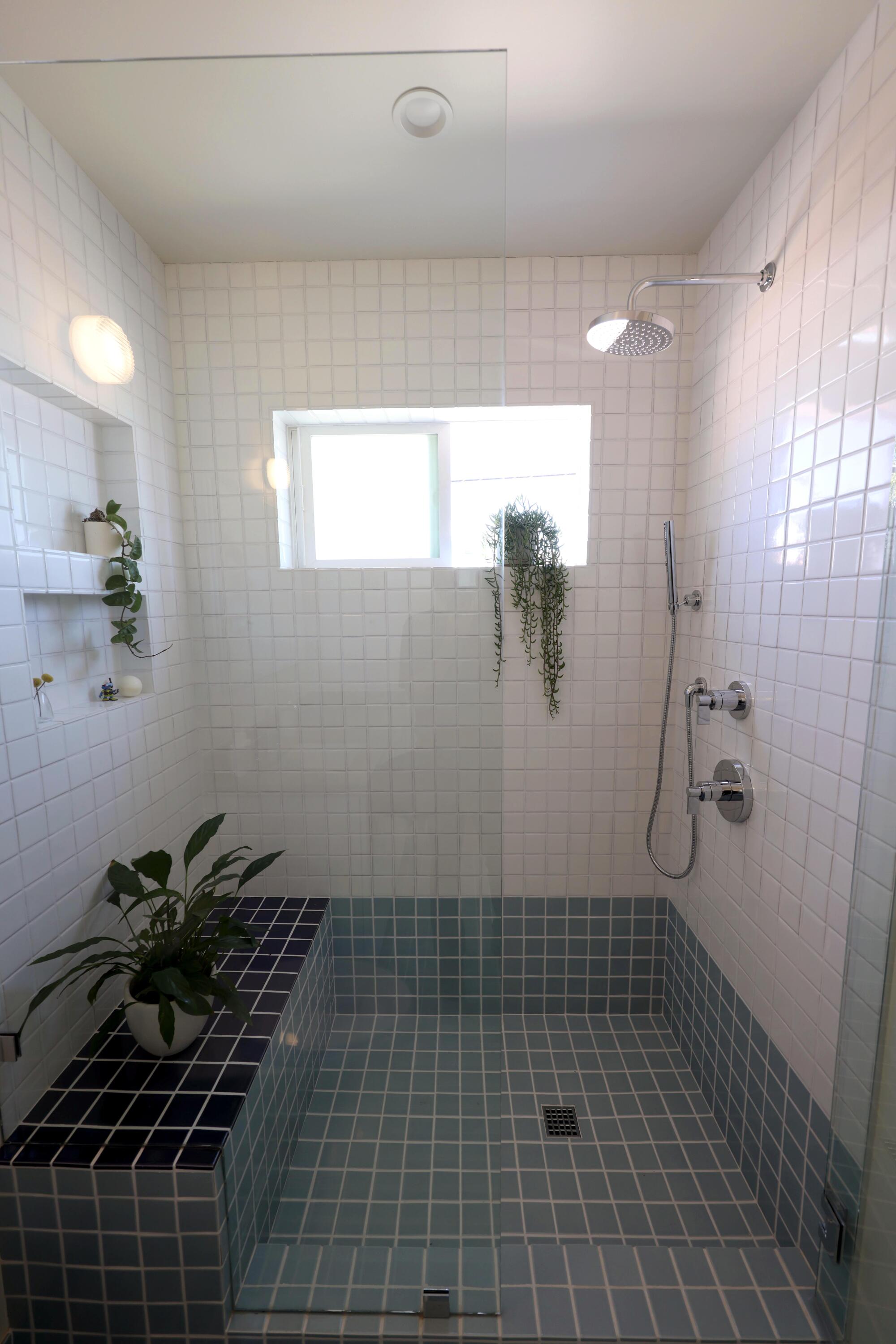
“I wanted the ADU to feel like a home and not a tiny home,” Janken says as Shin notes the two types of tile installed in the kitchen — glossy and matte — that help make the ADU feel special.
When she enters the bedroom just past the bathroom and storage closet, Janken is impressed by the clerestory windows and the fact that there’s enough space for an office. “This will indeed make someone very happy,” she says.
For more than 40 years, Janken lived in the Westwood duplex at the front of the property with her husband, Harold, who died in 2007. Today, she lives in an assisted-living facility, which the rent from her duplex helps to subsidize.
“It was a lovely home,” she says. “All of our tenants have been wonderful people. The same man has rented the front apartment for more than 20 years.”
Born and raised in Los Angeles, Janken has witnessed how the city has changed, including the Fairfax District where she grew up. “We used to get 10 cents apiece for hangers at the dry cleaners and then go to the movies at the Fairfax Theatre on Beverly and Fairfax,” she says. “They tore it down but kept the beautiful façade.”
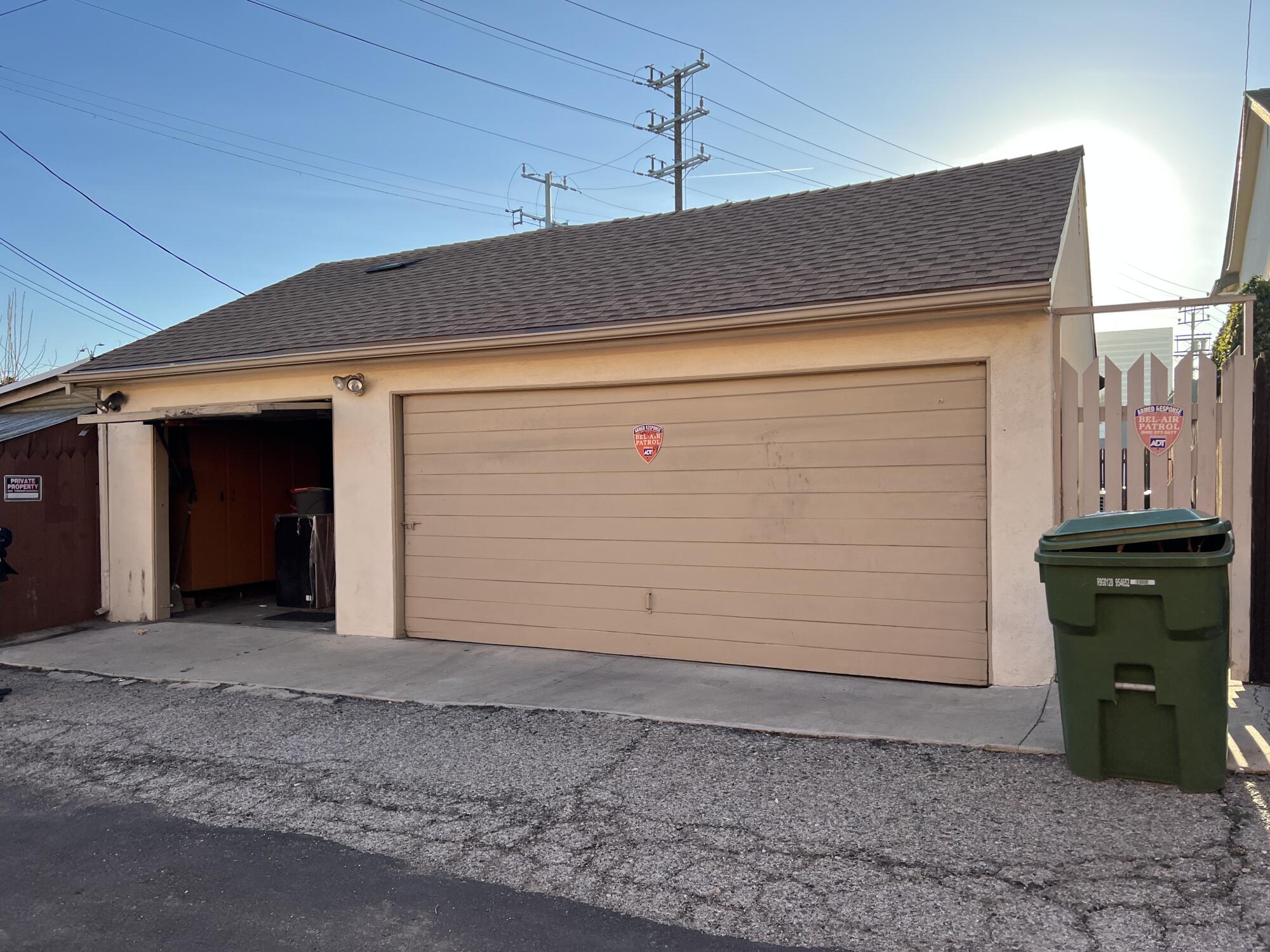
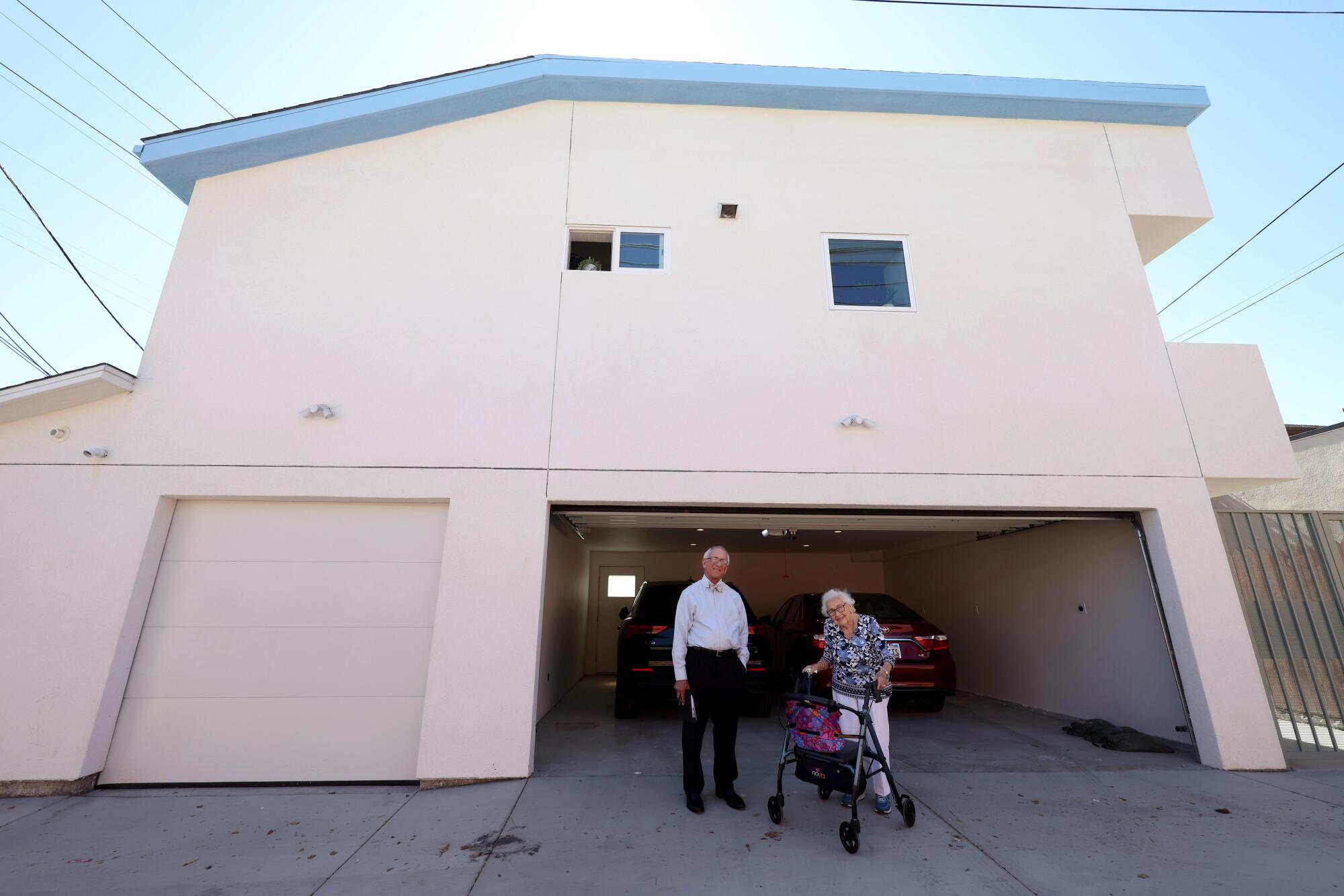
After she and Harold married, they lived in Beverlywood, not far from Hamilton High School, which their two sons attended. When their sons moved out, the couple sold their house in 1977 and moved to the duplex in Westwood despite some of their family members’ misgivings.
“We wanted something that my husband could repair because he was very handy,” she says of their move. “He reroofed a house without knowing how. But when we looked at the duplex, my sister and brother-in-law objected strenuously and told us, ‘You don’t want to live off an alley.’”
Ultimately, the couple bought the duplex for about $121,000, and Harold’s mother lived in the unit next door. “That way, her son was there to see her every day right after dinner,” Janken says. “She not only had privacy but she had family nearby.”
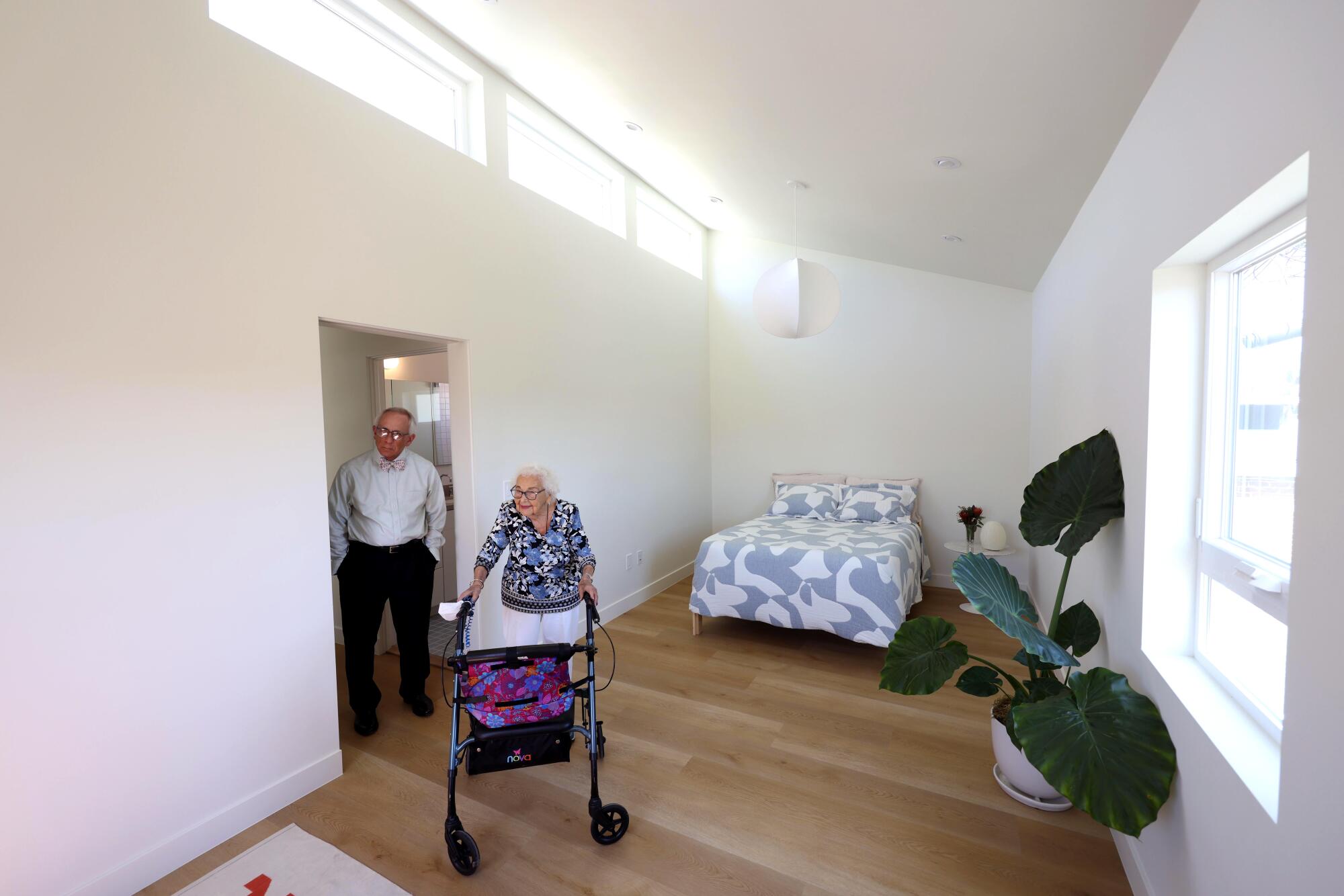
Decades later, Shin says the alley helped to facilitate the demolition of the garage and the addition of the ADU and parking for three cars. “Without the alley, we’d be giving up the parking to build the ADU, because there is no driveway or room for a driveway unless we demolished the existing house,” she says. The alley also provides a private entrance to the ADU, which means tenants won’t have to pass through the front property to get to the back house.
Although Glen Janken and Shin were the ones who interacted daily, Isabel Janken had strong opinions about what she wanted for the ADU: The exterior should be white with a traditional roof to match the front of the duplex. “It was important that the ADU be discreet and not look like a Modernist box,” Shin says of the back house, which is barely perceptible from the street. Janken also wanted each unit to have its own parking spot. Also non-negotiable: The decades-old Fuyu persimmon tree in the backyard had to stay.
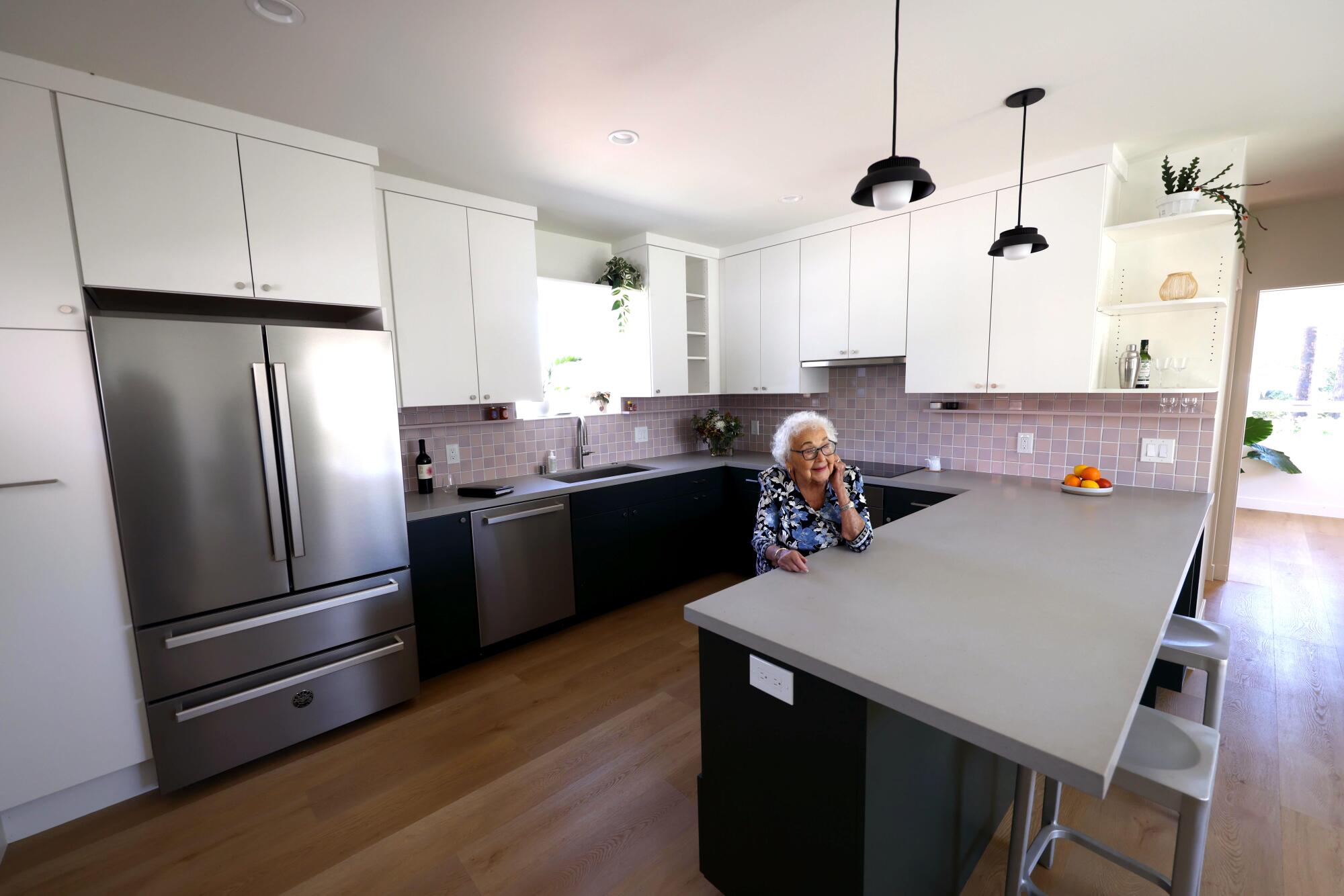
“I do have opinions,” she says, adding, “They didn’t follow all of them,” as her son and Shin laugh. “I wanted to add the ADU because it was wise from our standpoint, as well as for the economy and other people. I’d tell Melissa, ‘I read all the ADU stories in the L.A. Times,’” and then ask her, ‘Are you doing this to ours?’”
Because Janken insisted on parking, Shin designed the ADU on top of a three-car garage and a shared laundry and storage space. Also, in a splurge, the family added a rooftop outdoor space on top of the ADU, which offers panoramic views of Los Angeles. “I think it’s so important in L.A. to have some private outdoor space, which we are often eliminating with ADUs,” Shin says of increasing density.
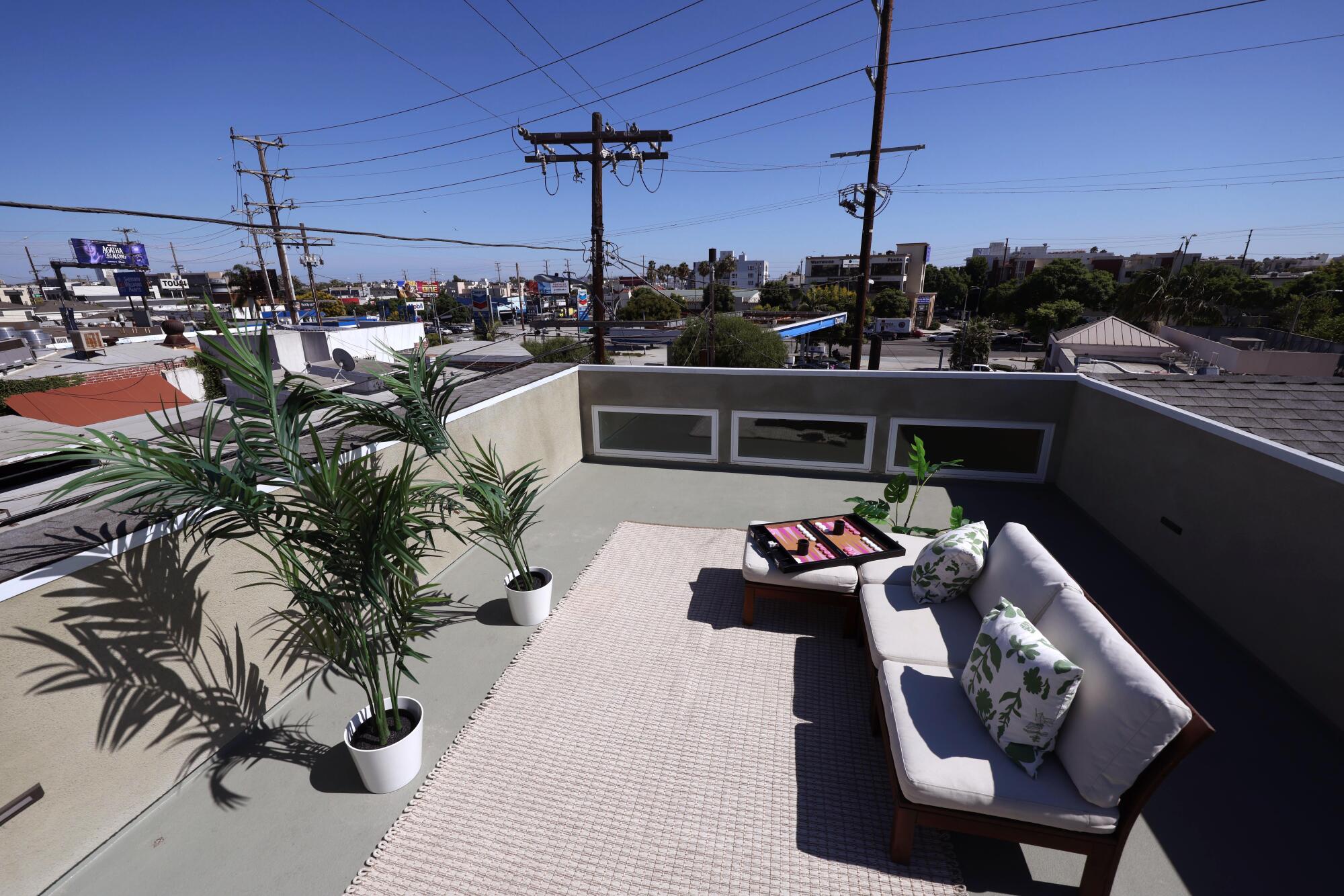
The project ultimately cost around $484,000, including approximately $364,000 for the ADU and roof deck and $120,000 for the three-car garage, the laundry and storage room, landscaping, concrete work, fencing, the electrical meter and power upgrades that are shared by the entire property. After a 12-month design and permit process and 18 months to build, the family recently received their certificate of occupancy; they hope to rent the ADU for between $3,500 and $4,000 a month.
Small-space living doesn’t mean you have to sacrifice style or succumb to clutter.
“Part of our thought process is that we wanted to create something comfortable for a tenant who will want to stay long-term,” Glen Janken says.
For Janken, it’s reassuring to know that her property will now serve as a community of three rentals. “It makes me feel good that others will use my former home,” she says. “I hope the future tenants will be as comfortable as we were.”
“This is my last time here,” she adds, motioning to the Times photographer. “I’ll treasure your pictures.”
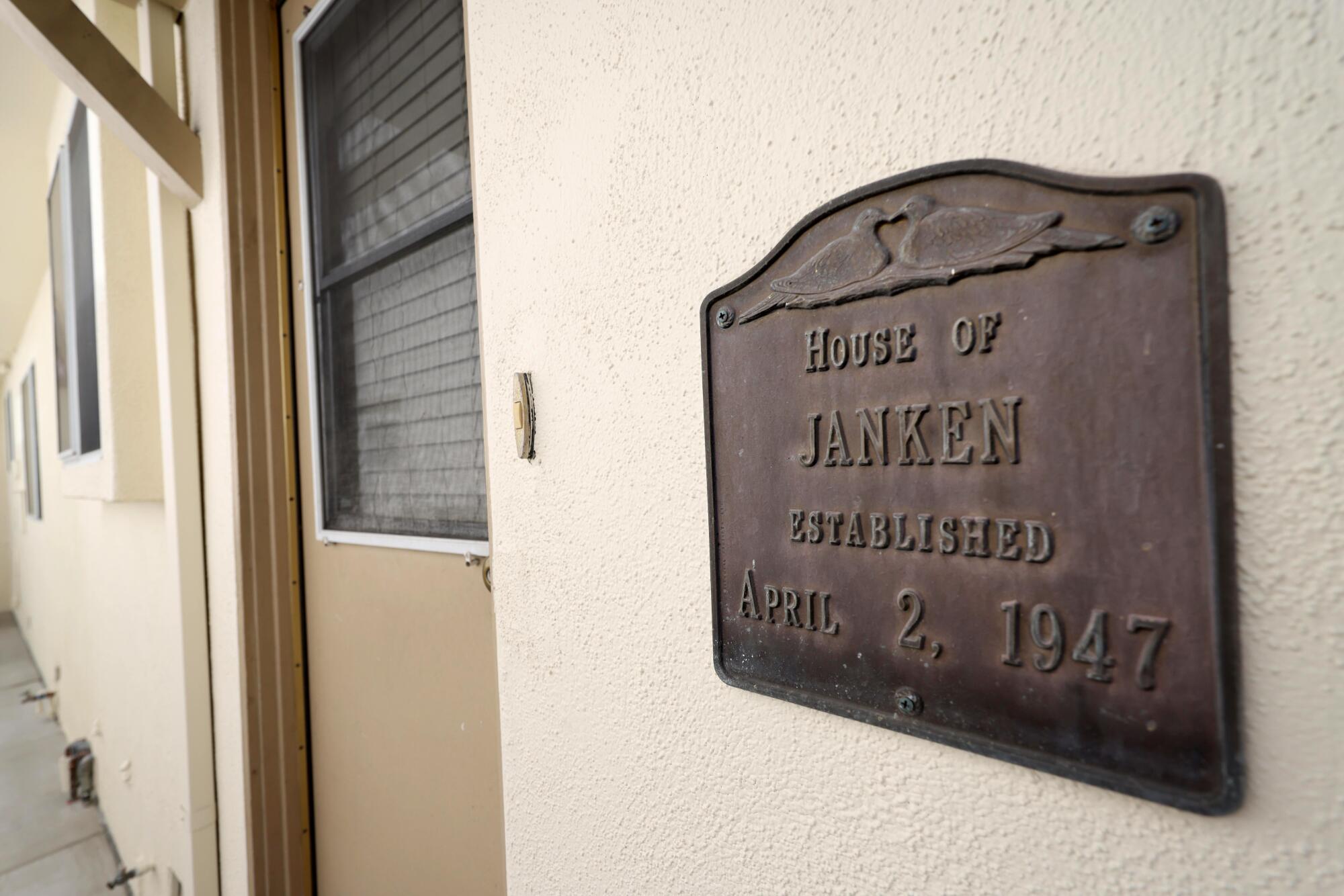
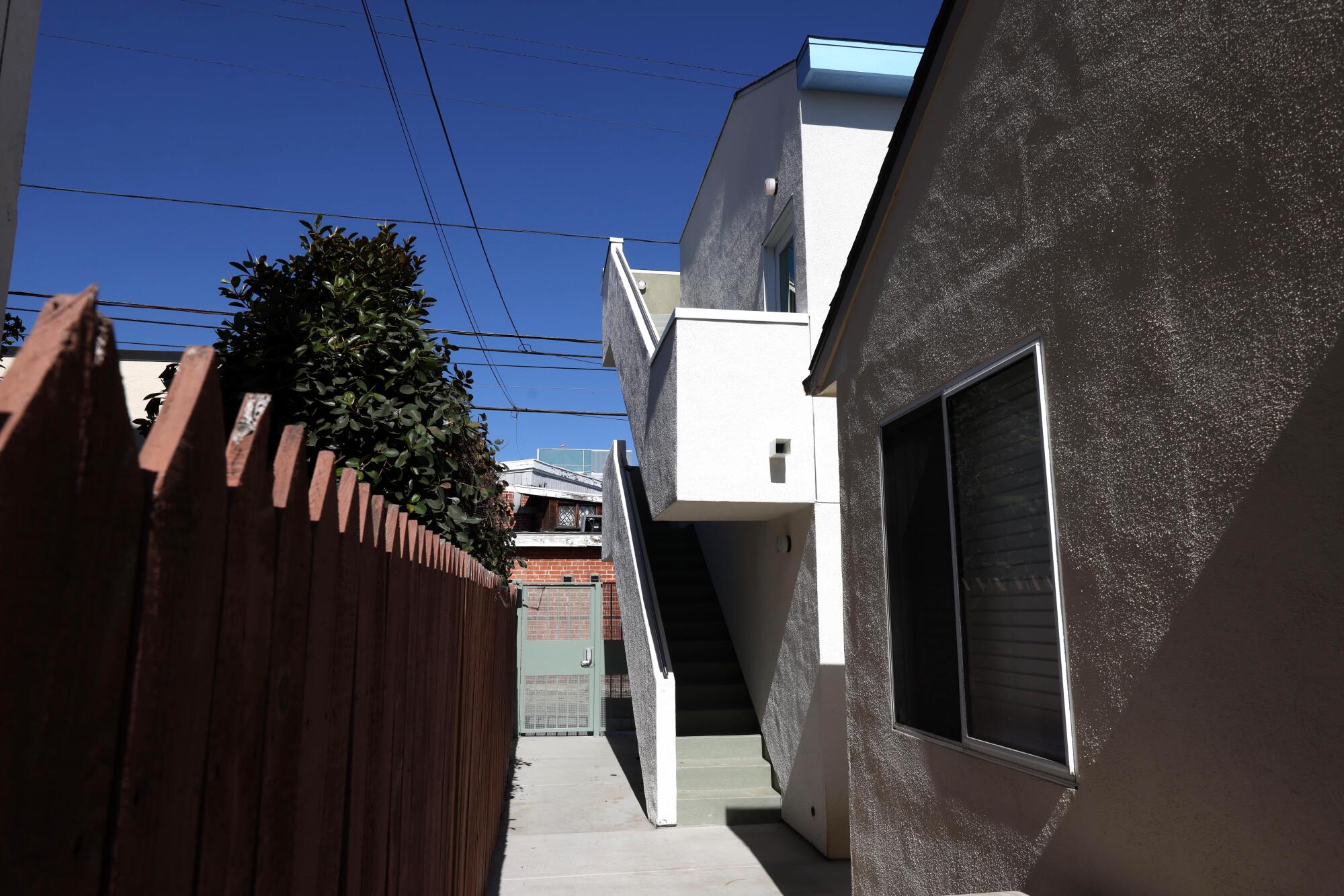
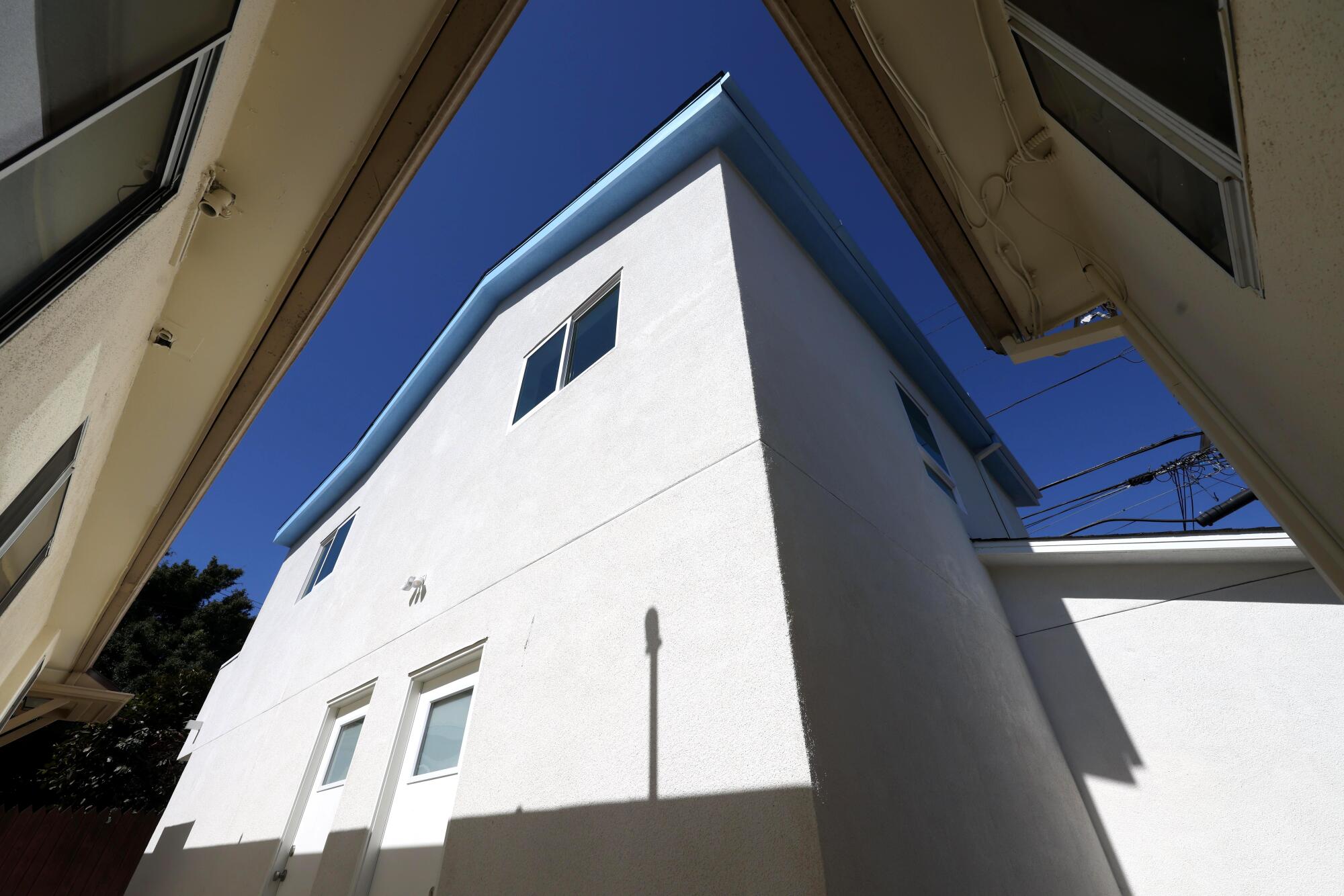
Times staff photographer Genaro Molina contributed to this report.
Tour more Los Angeles ADUs
After a decade of working out of coffee shops, two L.A. filmmakers add an ADU — twice
In L.A.’s tough housing market, cramped family adds ADU rather than move
First, they built an ADU ideal for surfers. Now, they’re ready to travel like nomads
They spent $354,000 to build a modern ADU. Now they rent it out for $4,500 a month
How L.A. architects designed a 300-square-foot ADU that pulls in $1,750 a month
How a Spanish bungalow in L.A. went from sad to sexy (Hint: There’s an ADU rental)
She wanted more than a guesthouse for her sister. This tiny ADU in L.A. delivers
This ADU rental with windows galore is a houseplant lover’s dream
More to Read
Sign up for This Evening's Big Stories
Catch up on the day with the 7 biggest L.A. Times stories in your inbox every weekday evening.
You may occasionally receive promotional content from the Los Angeles Times.
